- The LTC-Sabine Valley Campus mission is to provide the opportunity for training of entry-level skills for employment in business and industry, for retraining to individuals whose skills are deficient or obsolete, for training to those gainfully employed who need upgraded skills in their present work for advancement, and for training in those skills needed for entry-level into business and industry for students transferring from other schools in Louisiana where such training is not offered.
School Highlights
Louisiana Technical College-Sabine Valley Campus serves 134 students
Minority enrollment is 100% of the student body (majority Black and Hispanic), which is less than the state average of 60%.
Quick Stats (2025)
- Enrollment: 134 students
- Source: Integrated Postsecondary Education Data System (IPEDS)
Top Rankings
Louisiana Technical College-Sabine Valley Campus ranks among the top 20% of public schools in Louisiana for:
Category
Attribute
School Overview
Louisiana Technical College-Sabine Valley Campus
(LA) Community College Avg.
Carnegie Classification
Associates--Public Rural-serving Small
Associates Colleges
Institution Level
At least 2 years but < 4 years
At least 2 but less than 4 years
Institution Control
Public
Public
Total Faculty
n/a
37 staff
School Calendar
Student Body
The student population of Louisiana Technical College-Sabine Valley Campus has stayed relatively flat over five years.
The Louisiana Technical College-Sabine Valley Campus diversity score of 1.00 is more than the state average of 0.66. The school's diversity has stayed relatively flat over five years.
Total Enrollment
134 students
422 students
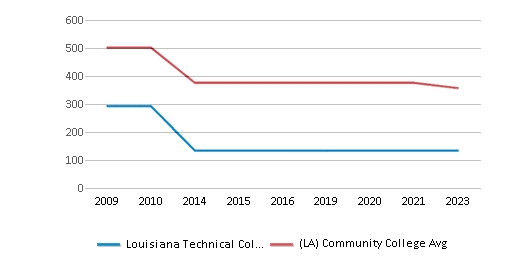
Student : Teacher Ratio
n/a
23:1
# Full-Time Students
n/a
311 students
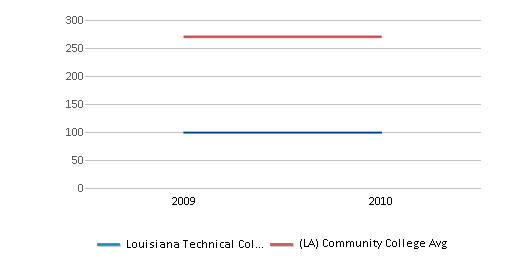
# Part-Time Students
n/a
393 students
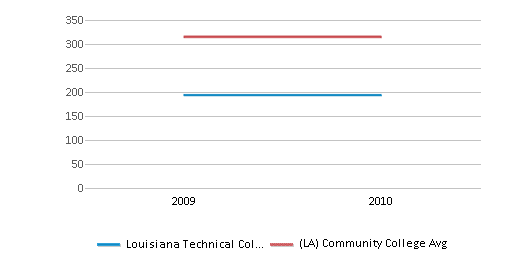
# Enrollment Undergraduate
n/a
343 students
# Full-Time Undergraduate Students
79 students
284 students
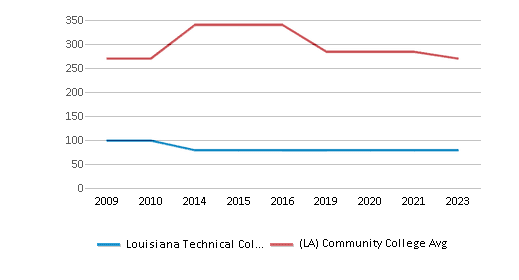
# Full-Time Graduate Students
n/a
17 students
# Part-Time Undergraduate Students
55 students
1,213 students
# Part-Time Graduate Students
n/a
1 students
Total Dormitory Capacity
n/a
217 students
% American Indian/Alaskan
n/a
1%
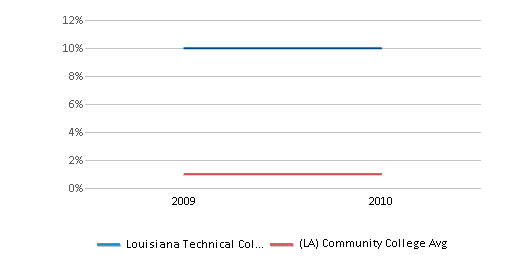
% Asian
n/a
2%
% Hispanic
n/a
5%
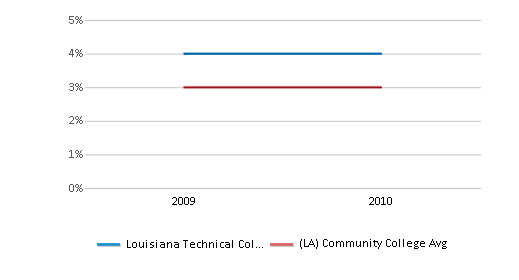
% Black
n/a
41%
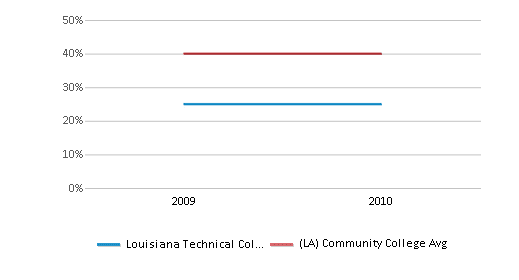
% White
n/a
40%
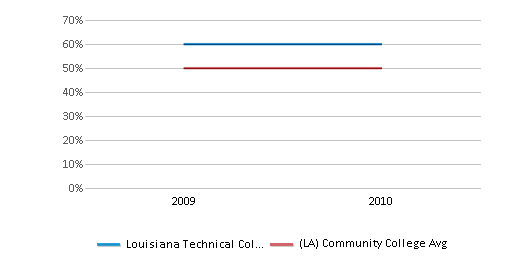
% Hawaiian
n/a
1%
% Two or more races
n/a
2%
% Non Resident races
n/a
1%
% Unknown races
100%
7%
Diversity Score
n/a
0.66
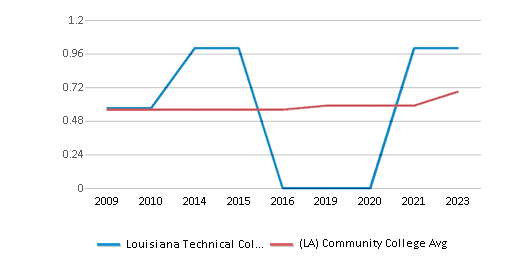
College Completion Rate (Students who graduate in less than 4 years) (Year 2010)
31%
42%
College Completion Rate (Students who graduate in 4 years or more than 4 years)
n/a
0.3147%
Average Graduate Earnings (10 Years) (Year 2010)
$31,000
$31,000
Tuition and Acceptance Rate
% Students Receiving Some Financial Aid
94%
90%
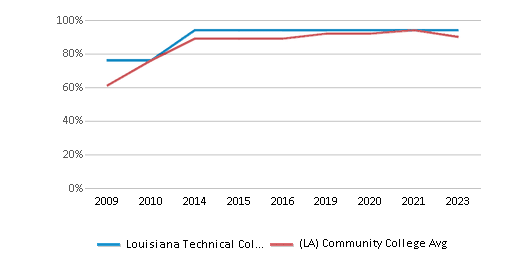
Median Debt for Graduates
n/a
$12,567
Median Debt for Dropouts
n/a
$5,500
Acceptance Rate
n/a
94%
ACT Composite
n/a
21
ACT English
n/a
21
ACT Math
n/a
20
Source: 2023 (or latest year available) Integrated Postsecondary Education Data System (IPEDS)
School Notes
- Louisiana Technical College provides statewide technical and vocational education and is composed of seven districts with forty campuses, each consisting of a multicultural population encompassing much diversification in the way of ideas, traditions, values, skills, and arts. This college is governed by the Louisiana Community and Technical College System (LCTCS) Board of Supervisors, which in turn comes under regulations set forth by the Louisiana Board of Regents for Higher Education. In 1952, the Louisiana State Legislature established the Sabine Parish Trade School as a state-operated, public, post-secondary school under the governance of the Louisiana Department of Education. The purpose was to offer broader vocational educational opportunities to the people of DeSoto, Sabine, and Vernon Parishes. Mr. C. C. Ferguson was appointed Director of the school. Extension classes in Business Training began in September 1952 in the three-parish area. The main building was completed in early 1953, and in June of that year, the following day programs were offered: Auto Mechanics, Farm Mechanics, Carpentry, and Business Training. The demand for Radio-TV technicians in this area brought about the addition of this program in 1957. Since classes were open-entry, open-exit, graduation dates varied according to individual progress and length of program. Louisiana Technical College-Sabine Valley Campus is located in Sabine Parish at 1255 Fisher Road in Many, Louisiana, and primarily services the residents of Sabine Parish. The brick structure sits on a ten-acre tract just outside the city limits of Sabine. The geographic area served by the college includes Sabine Parish and the northern part of Vernon Parish. Towns and communities served include Many, Zwolle, Converse, Pleasant Hill, Belmont, Florien, Negreet, Ebarb, Hornbeck, and Anacoco. The Accrediting Commission of the Council on Occupational Education (COE) accredits each individual campus of the Louisiana Technical College.
Frequently Asked Questions
What is Louisiana Technical College-Sabine Valley Campus's ranking?
Louisiana Technical College-Sabine Valley Campus ranks among the top 20% of community college in Louisiana for: Average community college minority breakdown.
Recent Articles

Obtaining Your Bachelor's Degree at a Community College
Explore the evolving landscape of community colleges offering bachelor's degrees, addressing affordability, accessibility, and workforce needs.

A to Z of Community College Certificates and Courses
From business and healthcare to technology and skilled trades, the article showcases the breadth of options available to students seeking to enhance their knowledge, develop new skills, or pursue career advancement.

What is a Community College?
This comprehensive guide explains what a community college is, its history, and its role in higher education. It covers the types of programs offered, differences from four-year colleges, benefits of attending, and important considerations for prospective students, providing valuable insights for those exploring educational options.





